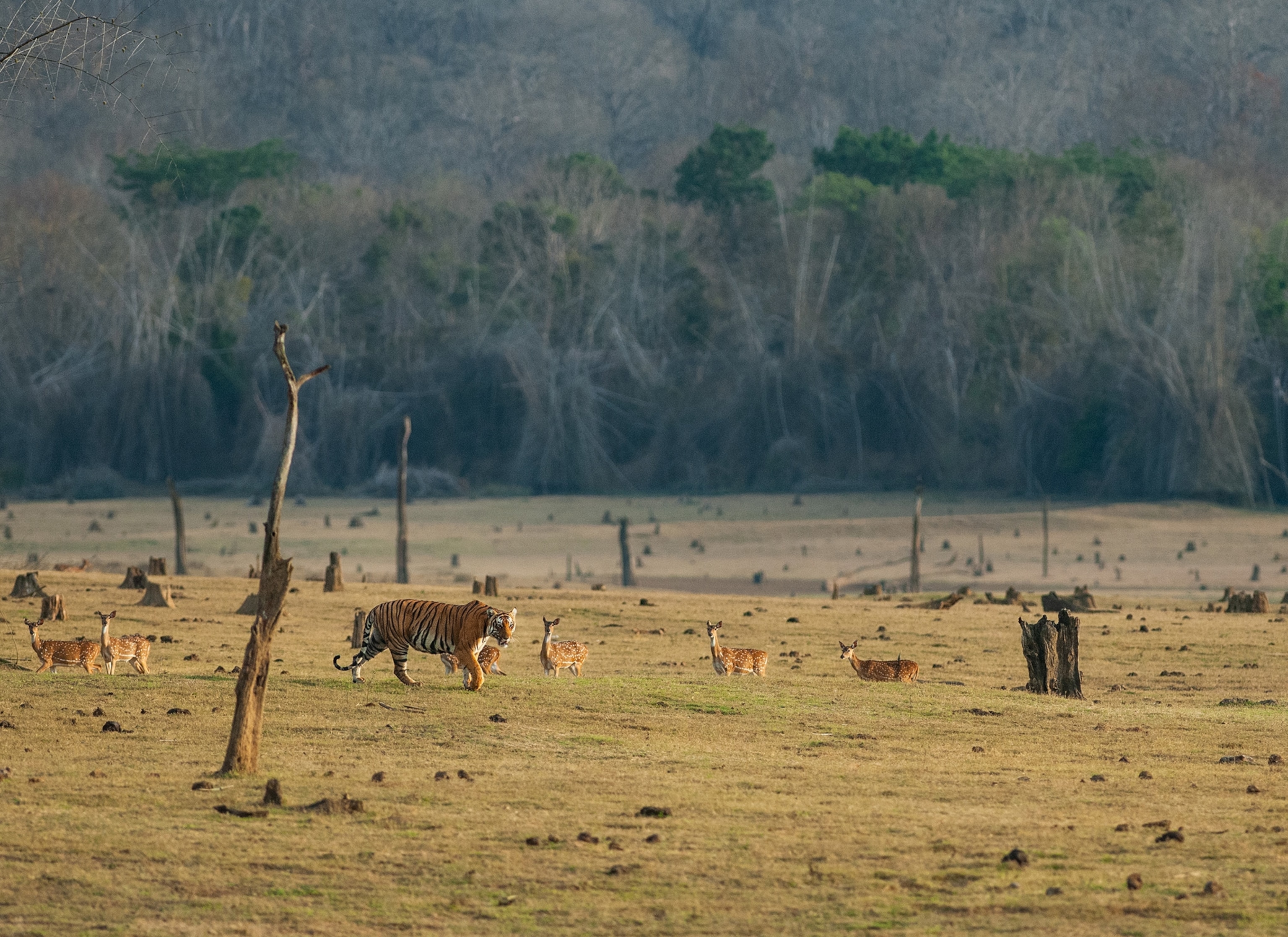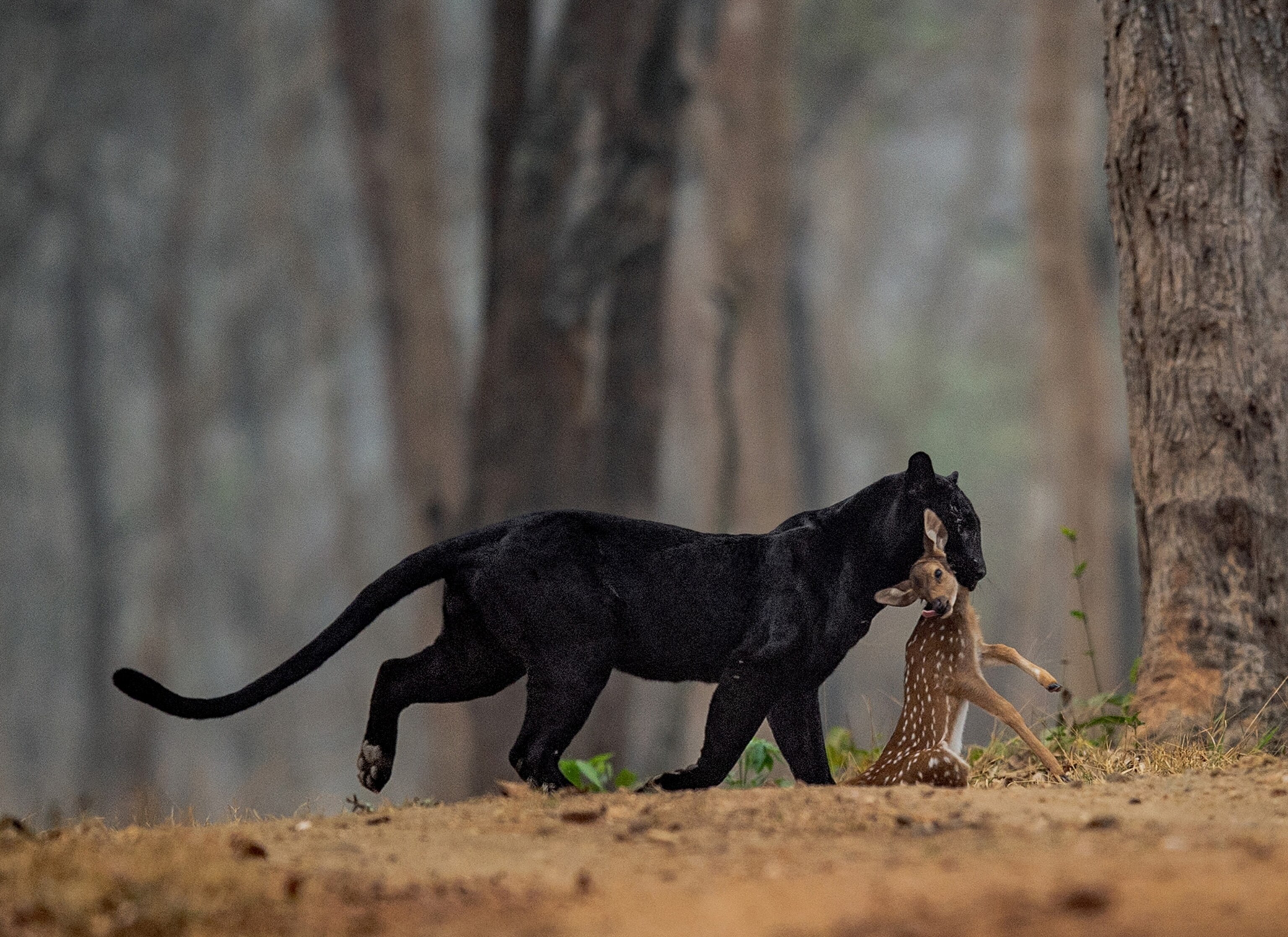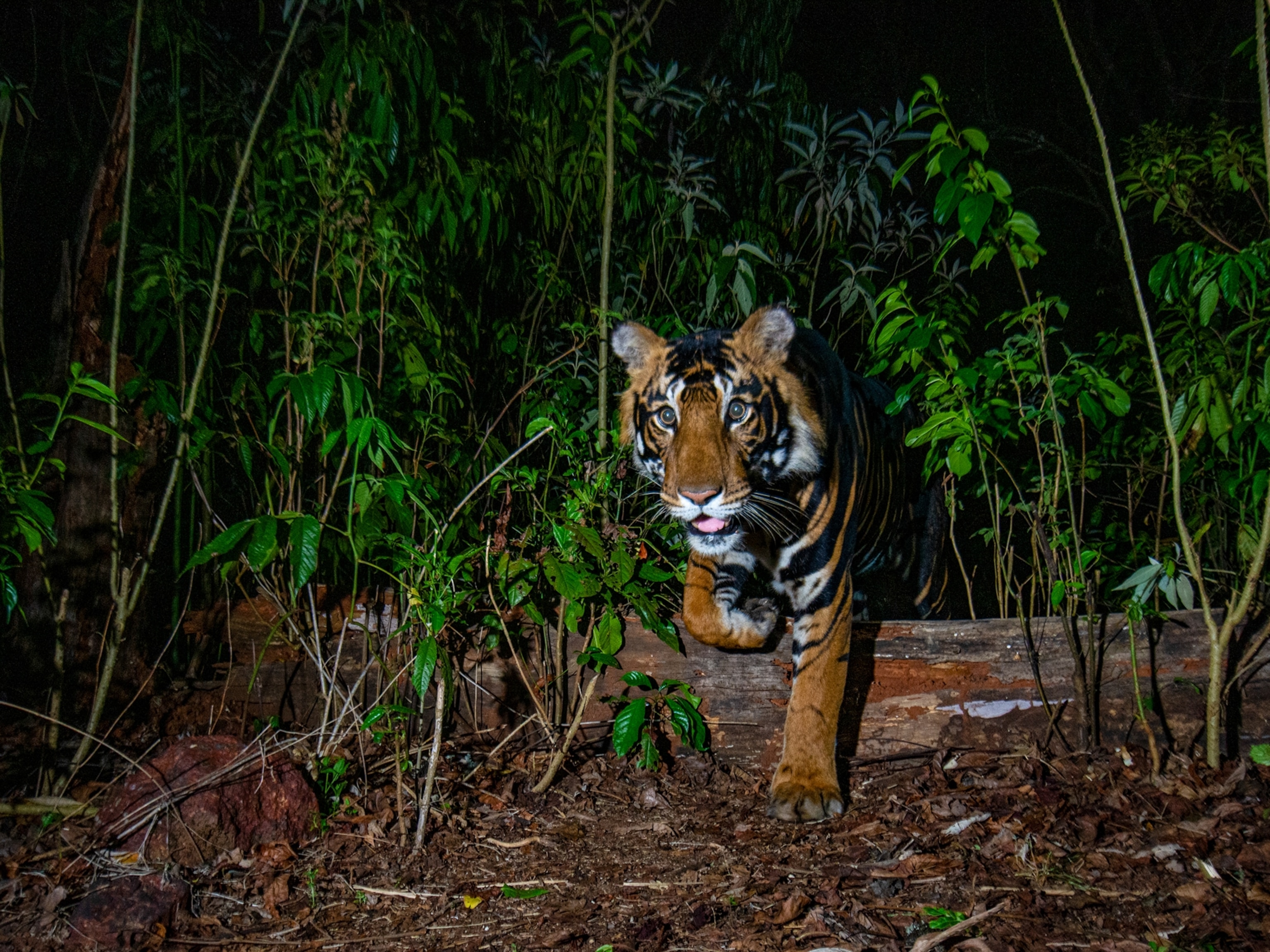
In this dense Indian forest, tigers and leopards are thriving
A conservation success story, Nagarahole Tiger Reserve is increasingly popular with tourists eager to see the big cats in the wild.
Draped in mist, the lush, forested landscape of Nagarahole Tiger Reserve in India’s southwestern Karnataka state looks enchanted.
An elephant lumbers through the foliage, feeding on shrubs and leaves, its gigantic ears flapping as if to the beat of a metronome. Up ahead along the dirt road, bison-like gaur graze in a meadow, not so much as glancing in our direction.
Guided by photographer Shaaz Jung, who has lived in a lodge in the forest for the past 12 years, we drive on, stopping by a herd of spotted deer. An iridescent blue kingfisher flits between the trees. As sunlight cuts through the haze, the tranquility is broken by the bark of a deer ringing out in the distance. It’s an alarm, warning that a predator lurks nearby.


Nagarahole is the perfect place for tigers and leopards to coexist: tigers prowling in the undergrowth, leopards lounging in trees.
Calls like this are heard here with increasing frequency. Nagarahole abounds with Bengal tigers and Indian leopards. Tourists flock to the reserve to catch a glimpse of these big cats, including an especially bold black panther—a leopard with a mutation that causes dark pigmentation. That cat, often sighted, has become something of a star.
“Usually when you go on a safari, it’s like, Did you see a tiger?” says Krithi Karanth, a scientist at the Centre for Wildlife Studies in Bengaluru (formerly Bangalore). “Now it’s like, Oh, you saw a tiger. Great, but did you see the black panther?”
Less than a 10th of the 327-square-mile park is open to visitors. At the southern end of this tourism zone lies the Kabini River, fringed with brush and tall grasses. Beyond are meadows and streams and dense woods. It’s the perfect milieu for tigers and leopards to coexist: tigers prowling in the undergrowth; leopards lounging in trees, safe from tigers.

The likelihood of seeing these big cats has gone up significantly during the past decade in Nagarahole and many other wildlife reserves across India, thanks to the success of conservation efforts. The latest count of tigers at Nagarahole was 135, more than twice the number from a decade ago. The country now has almost 3,000 tigers in the wild, according to the latest official census, completed in 2018. That’s 33 percent higher than in 2014. The number of leopards has increased 62 percent since 2014, to nearly 13,000.
One sign of this growing population is more sightings of big cats beyond the edges of reserves, which also has increased the potential for conflict with humans. “I have tigers living around my house in central India,” says conservationist Belinda Wright, founder of the Wildlife Protection Society of India, who lives on the edge of Kanha Tiger Reserve in the state of Madhya Pradesh.
The rising numbers are particularly encouraging to conservationists because tiger and leopard counts are now more credible. Until 2006, India’s tiger census, conducted every four years, was more of a guesstimate based on a survey of paw prints—a lengthy and tedious exercise carried out by teams covering tens of thousands of square miles. The bulk of the counting is now done using images from camera traps that enable the identification of individual tigers and leopards by their unique patterns of stripes or spots.
Vijay Mohan Raj, chief conservator of forests in Karnataka, credits the success at Nagarahole and other reserves to more effective anti-poaching personnel strategically stationed inside the reserves. These frontline workers, Raj says, now are better trained and better equipped because of increased government funding that followed India’s commitment in 2010 to an international plan to double the number of tigers worldwide. “That’s been the biggest deterrent for anybody looking to enter the forest to poach for meat or even to collect firewood,” he says. “All such incursions stopped.”
As a result, the density of prey species such as deer and wild boar has gone up, helping their predators—tigers and leopards—to thrive. At Nagarahole the big cats also appear to have benefited from 26 solar-powered bore wells installed next to ponds, keeping them full even in the dry months.
The future of big cats in Nagarahole and similar reserves hinges in part on minimizing conflict between the animals and neighboring communities. In one village I visited just outside the park boundary, I watched kids rolling rubber tires along a mud track as the sun was setting over the Kabini. A cart trundled by, pulled by a pair of oxen, their bells jangling.

As the competition for territory inside India’s reserves intensifies, tigers and leopards are wandering into such villages more often, killing cattle and sometimes humans. In Karnataka alone, at least nine people were killed by tigers from 2019 to 2021.
Even though revenue from big cat tourism has been growing, Wright says, the money hasn’t helped local residents. “So they don’t feel they benefit from the presence of tigers,” she adds. Wildlife authorities do compensate people who lose cattle to tigers and have moved some villages away from tiger terrain, but they still need to do more to give surrounding communities a stake in the success of the reserves, conservationists say, or the gains made over the past decade could disappear.
Yudhijit Bhattacharjee is a contributing writer for National Geographic. Shaaz Jung has spent hundreds of hours documenting the lives of big cats after becoming fascinated with leopards.
This story appears in the March 2022 issue of National Geographic magazine.





